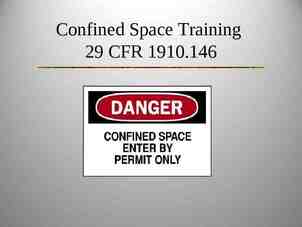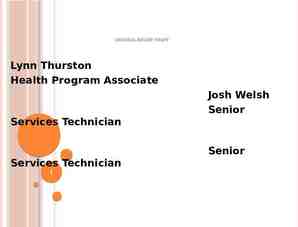Powerful Pulleys
13 Slides1.78 MB
Powerful Pulleys
What is a pulley? A pulley is a wheel A pulley uses rope that goes around the wheel (often in a groove) The rope attaches to objects The other end of the rope has a force applied Applied force is a push or pull
Fixed Pulley Force Rope Fixed Pulley Weight Object moves Pulley stays in the same spot Force applied only on one end of the rope
Moveable Pulley Reaction Force Rope Movable Pulley Pulley is attached to object Pulley and object move together Rope is attached to something that does not move Force applied to other end of rope Force Pulley Weight
Who has seen pulleys? Pulleys are all around us Elevator Flagpole Window shades and blinds
More examples Sails and fishing nets Cranes clothes lines gym training equipment rock climbing gear
Why use pulleys? Makes lifting things easier Pulleys redirect force Enables us to use gravity to help us (it is usually easier to full down than to lift something up) Using several pulleys reduces the force required to lift an object We have to use more rope and make the rope go further Mechanical Advantage: More distance traveled, but less force required
Using Gravity Easier to pull down than up Elevators use gravity Counterweight on the other side of the cable Gravity already applying force on counterweight Less powerful motor required Elevator Pulleys Counterweight
System of Pulleys The force needed to raise this weight is ¼ the weight of the object Weight
How do they help us? How do they help us build the pyramids? Block Pull Here
Building the Pyramids
Vocabulary & Definitions Force: A push or pull on an object. Fixed pulley: A pulley attached to a fixed point with the rope attached to the object. Movable pulley: A pullet attached to the object itself, with one end of the rope attached to a fixed point. Redirect force: To change the direction of a push or pull to gain advantage over a task. Mechanical advantage: The advantage gained my using simple machines; trading distance for force.
References Drawing of block and tackle (right) is Copyright U.S. Department of Transportation, Federal Highway Administration, Handtools for Trailwork, http://www.fhwa.dot.gov/environment/fspubs/05232810/page16.htm Photo of Giza pyramid (right) is Copyright National Library of Medicine, Profiles in Science, The Wilbur A. Sawyer Papers, http://profiles.nlm.nih.gov/LW/B/B/D/Y/ Photo of crane (right) is Copyright NASA, Nightglow, Interesting Vehicles, http://nightglow.gsfc.nasa.gov/vehicles.html Drawing of mine elevator (right) is Copyright U.S. Department of Labor, Mine Safety and Health Administration, http://www.msha.gov/S&HINFO/TECHRPT/HOIST/PAPER4.HTM The photo of an unguarded belt and pulley (right) is Copyright U.S. Department of Labor, OSHA, http://www.osha.gov/SLTC/woodproducts/pulley.html. The hand and pulley photograph (right) is Copyright Denise Carlson, ITL Program, College of Engineering and Applied Science, University of Colorado at Boulder. Used with permission. Pulley concept drawings are Copyright ITL Program, College of Engineering and Applied Science, University of Colorado at Boulder. The rest of the images are Copyright 2004 Microsoft Corporation, One Microsoft Way, Redmond, WA 98052-6399 USA. All rights reserved.


















